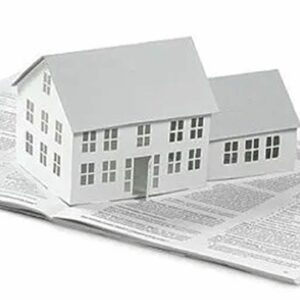I’m replacing an ageing gas dryer with an electric. The receptacle was installed and wired when the house was built, about 12 years ago. The connection was never made in the panel, though the 30A breaker was there from the start, labelled “future dryer” on the door, in the same handwriting as the rest. The cable is 6 gauge SE, so it’s only 2 conductors plus neutral/ground, with a NEMA 10-30R installed by the original electrician.
The problem is that the 6 gauge aluminum is too large for the 30A QO breaker, which may be why it was never hooked up. I don’t want to rewire with 10/3/G right now, as it’s going to be a time consuming job and I’m too far into other projects and just need to hook up what I have for the time being. I also don’t want the electrical inspector to fail the present remodel because of an obvious improper dryer connection. A 40A breaker would work, but the receptacle is not rated for it, and I doubt the dryer has any internal protection of its own. I also don’t know if splicing 10 gauge pigtails to the aluminum inside the load center is acceptable.
Any suggestions?
Be seeing you…


















Replies
Well, you have to meet code and be safe, which is all the inspector is going to require. So there's no harm in asking him to look at it and tell you what is needed to fix it. He sees a lot of installations that need correcting, so he can suggest how to comply with the code with the least amount of work.
With aluminum wire in particular, everything has to be just right to be safe.
Pin terminals will work, if you can find the appropriate size. A pin terminal provides a reliable crimp- connection to the conductor, and the solid pin will fit in the breaker.
For example: http://www.ilsco.com/
Bob
Bob,
Good suggestion, if the homeowner has the right tooling to crimp 6AWG wire. I doubt that he does.
I suggest that he pigtail some 10AWG copper onto the aluminum. This can be done using a split bolt connector rated AL/CU, and using some NOALOX or Penetrox on the aluminum (and shining it up with a scotchbrite pad or wire brush).
Cliff
Barry - You have read it correctly, it's two insulated conductors with bare strands around the pair. The receptacle is three prong (two angled, one "L" shaped). The dryer has a matching 3-conductor plug already installed (it's from my last house), and the ground jumper is in place. As I mentioned above, that's how the electricians built the place, 12 years ago. The breaker was already in the panel, and marked as being for a dryer, but the connection was never made. Interestingly, the kitchen range cable is also in the box, same 6 gauge SE with twisted (or braided) neutral/ground, and also not hooked up to the 50A breaker which was in place and marked "future range". That cable isn't adequate for a 50A range circuit, as far as I know. Maybe they got a good deal on 6 gauge SE.
I don't like the combined ground on the neutral either (I don't know exactly when the code was changed to disallow it), so after I finish a couple of other major projects, I'll run new 10/3/G copper with a 4 prong receptacle and cord. But it's too big of a job to get into it right now. I need to get the dryer running, as the existing gas unit, which was probably original to the house since the electric was never connected in the panel, is falling apart.
Any advice is greatfully accepted. I don't like aluminum, and I've never been happy about making connections with it for the long run.
Be seeing you...
Tom,
Sometimes I have to try to remember that what I do on commercial jobs where I live isn't what others do on residential jobs in other parts of the country.I was made aware of that recently by Bill Hartmann regarding making joints in panels,and putting more than one wire on a breaker.Those are things that I can't do but is permitted elsewhere.So,while I wouldn't ever use SE cable with a bare neutral for branch circuits,maybe where you are it's OK.To me the code requirement now for a separate ground and neutral at a dryer means three insulated conductors,one of which should be white, plus an equipment grounding conductor,that should be green or bare,all within range for the device that they're terminating on.
If it was on a construction site maybe in a pinch I'd temporary it in for a day but not in my home.My suggestion would be to bite the bullet and just replace the SE with the right cable.You can do it a lot faster than you think when you're motivated.
The SE cable is grandfathered, but the house is only 12 years old. I don't know when the Code was changed exactly, but I do know that the AHJ is using the 2002 Code now. I don't like the neutral-as-ground any more than you, and will change it at some point. It's just that I'll be starting a major kitchen remodel in the spring, and would prefer to do it when I run the new cables for additional circuits (like getting the refrigerator off the small appliance branch circuit). By the way, the Square D QO breakers are capable of 2 conductors under each clamp, but I don't know if it's legal to unravel the stranding and straddle the screw with an oversized conductor.
Thanks to you and everyone else for the input.
Be seeing you...
Edited 1/27/2003 1:55:33 PM ET by Tom Kanzler